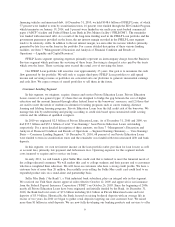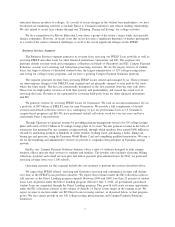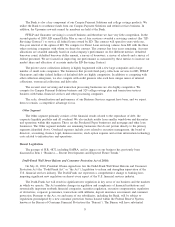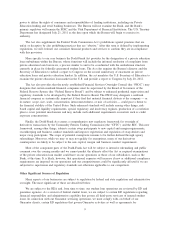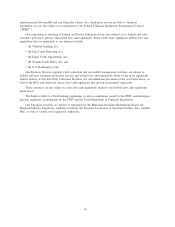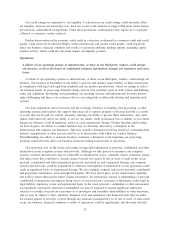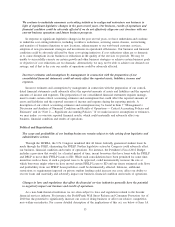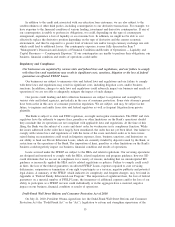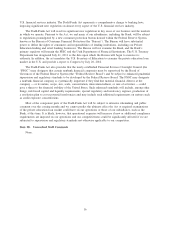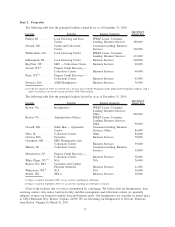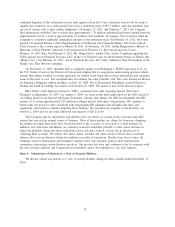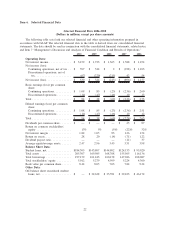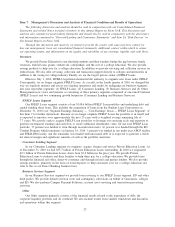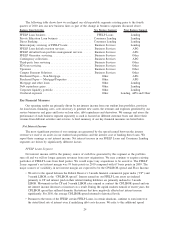Sallie Mae 2010 Annual Report Download - page 17
Download and view the complete annual report
Please find page 17 of the 2010 Sallie Mae annual report below. You can navigate through the pages in the report by either clicking on the pages listed below, or by using the keyword search tool below to find specific information within the annual report.U.S. financial services industry. The Dodd-Frank Act represents a comprehensive change to banking laws,
imposing significant new regulation on almost every aspect of the U.S. financial services industry.
The Dodd-Frank Act will result in significant new regulation in key areas of our business and the markets
in which we operate. Pursuant to the Act, we and many of our subsidiaries, including the Bank, will be subject
to regulations promulgated by a new consumer protection bureau housed within the Federal Reserve System,
known as the Bureau of Consumer Financial Protection (the “Bureau”). The Bureau will have substantial
power to define the rights of consumers and responsibilities of lending institutions, including our Private
Education lending and retail banking businesses. The Bureau will not examine the Bank, and the Bank’s
primary regulator will remain the FDIC and the Utah Department of Financial Institutions. The U.S. Treasury
Department has designated July 21, 2011 as the date upon which the Bureau will begin to exercise its
authority. In addition, the act mandates the U.S. Secretary of Education to examine the private education loan
market in the U.S. and provide a report to Congress by July 20, 2012.
The Dodd-Frank Act also provides that the newly established Financial Services Oversight Council (the
“FSOC”) may designate that certain nonbank financial companies must be supervised by the Board of
Governors of the Federal Reserve System (the “Federal Reserve Board”) and be subject to enhanced prudential
supervision and regulatory standards to be developed by the Federal Reserve Board. The FSOC may designate
a nonbank financial company as systemically important if they find that material financial distress at the
company — or its nature, scope, size, scale, concentration, interconnectedness, or mix of activities — could
pose a threat to the financial stability of the United States. Such enhanced standards will include, among other
things, risk-based capital and liquidity requirements, special regulatory and insolvency regimes, production of
a resolution plan to cover potential insolvencies and may include such additional requirements on matters such
as credit exposure concentrations.
Most of the component parts of the Dodd-Frank Act will be subject to intensive rulemaking and public
comment over the coming months and we cannot predict the ultimate effect the Act or required examinations
of the private education loan market could have on our operations or those of our subsidiaries, such as the
Bank, at this time. It is likely, however, that operational expenses will increase if new or additional compliance
requirements are imposed on our operations and our competitiveness could be significantly affected if we are
subjected to supervision and regulatory standards not otherwise applicable to our competitors.
Item 1B. Unresolved Staff Comments
None.
16


